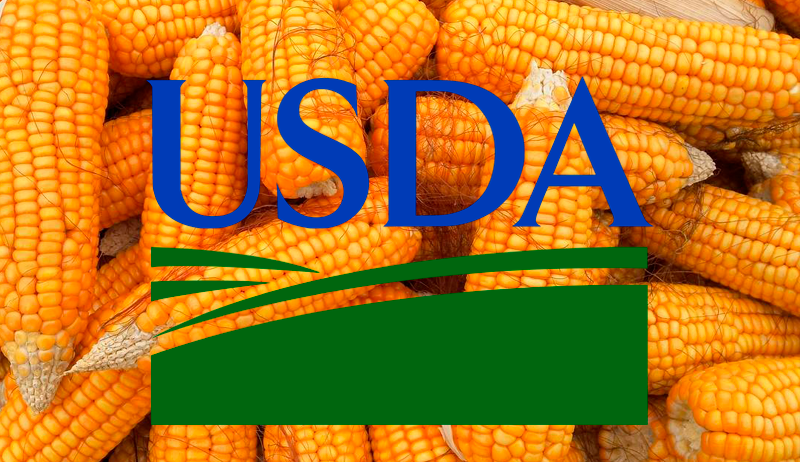USDA projects record corn crop as tariffs deepen farm struggles

Last week, the USDA forecast a record corn crop at 16.7 billion bushels, with record setting yields of over 188 bushels per acre. USDA also pegged soybean yields at just shy of 54 bushels per acre, which is not quite a record setting yield. The problem with these huge yields is finding markets for them in this era of trade wars with half the planet, because full grain bins and a trade war is a drag for producers to find profitability in markets.
According to U.S. Department of Agriculture economists, the United States maintained an agricultural trade surplus with the rest of the world for nearly 60 years, from the late 1950s until 2019. In that year, during Donald Trump’s first trade war, the agricultural trade balance shifted to a deficit , as the U.S. began importing more agricultural products than it exported. During the first half of 2025, he agricultural trade deficit hit a record high, indicating a decline in the long-term dominant role that U.S agricultural producers have played in world agricultural trade for 50 years. This deficit amounted to $4.1 billion in June, which pushed the agricultural trade deficit to almost $29 billion for the first six months of 2025. U.S. trade data released by the Commerce Department recently showed that the U.S. exported just $5.5 billion worth of farm goods to China in the first six months of the year, compared to $11.8 billion at the same point last year. Commodity traders pin this loss of trade to Trump imposing tariffs of more than 125% on Chinese goods, which triggered China to impose similar tariffs on U.S. products. A big factor in lower exports to China is the lack of soybean sales U.S. producers have made to China this year. As of July 24th, US soybean exporters had sold just over 3 million metric tons of soybeans in fiscal year 2025/26, which begins September 1st. That volume is a 20-year low for the date and is down 12% from last year. China has yet to buy a single cargo, and this is China’s latest start for purchasing U.S, soybeans since 2005.
However, the economic picture is a bit brighter for livestock producers, which may be a bit of a problem for consumers, because of higher prices at meat counters. The USDA reported that Beef output will likely fall more than previously expected in 2025 and 2026 due to reduced slaughter and lower dressed weights. Production for 2025 is now forecast at almost 26 billion pounds, which if so, would be down almost 4% from 2024. Pork output is forecast to fall slightly this year after previous expectations for increased production in 2025, which is projected to be just short of 28 billion pounds, a slight decrease from 2024.
The USDA released some interesting data recently about rural America. They reported that 97% of the nation is geographically considered “rural” and 20% of all Americans, or about 68.4 million people, live in rural areas. That means that 80% of the nation’s population, or about 275 and a half million Americans, live on just 3% of the nation’s land mass in cities. About 16% of the rural population, which amounts to around 11 million people, use the USDA Supplemental Nutrition Assistance Program to purchase food. In U.S. metro areas, 11%, or about 30 million people, use SNAP.
While President Trump has repeatedly stated his love for farmers, his tariffs are causing a dramatic increase in the cost of inputs that farmers and ranches need to keep their operations going, while crop prices have decreased over the past six months. Large agricultural companies like Mosaic Company, AGCO Corporation. and Bunge Global SA reports that deliveries of key nutrients to the U.S. have plunged, machinery prices are climbing and crop buyers are limiting purchases due to increasing market uncertainty.
Trump is asking farmers to give his tariff policies time to play out, while promising them better results than the trade deal that he made with China in his first term. But what he says and the impacts that farmers are seeing are two different outcomes. While Trump stated that he wants to “make sure they have the labor they need, he is at the same continuing to deport workers that farmers need to plant and harvest crops. Also, with Trump’s new tariffs coming into effect last week, the average U.S. tariff rate is 15.2%,which is much higher than the 2.3% rate that was in effect last year, and is also the highest tariff rate since the World War II era, according to Bloomberg Economics estimates.
At this stage, Corn and soybean farmers are facing another year of negative returns due to the low grain prices. However, Gary Schnitkey Professor in the Department of Agricultural and Consumer Economics at the University of Illinois, hopes that extra payments from the One Big Beautiful Bill may help to offset some of these losses, but he believes that there is no end in sight to this ongoing downturn. He recommends that Farmers should attempt to build a plan where they can withstand low returns for the next four to five years.
For almost 30 years of expertise in the agri markets, UkrAgroConsult has accumulated an extensive database, which became the basis of the platform AgriSupp.
It is a multi-functional online platform with market intelligence for grains and oilseeds that enables to get access to daily operational information on the Black Sea & Danube markets, analytical reports, historical data.
You are welcome to get a 7-day free demo access!!!
Write to us
Our manager will contact you soon



